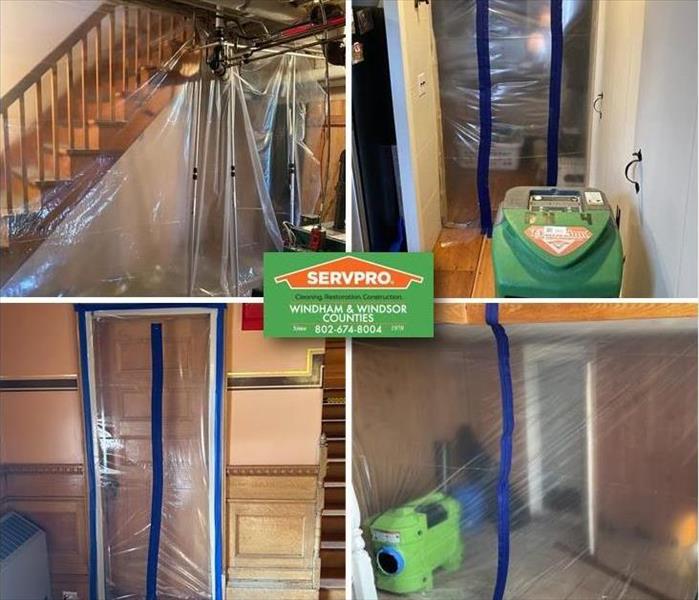Water Damage Mitigation: Containment is Key
1/12/2023 (Permalink)
 Water damaged properties can be dried more efficiently by "containing" affected areas from non-affected areas during the drying process.
Water damaged properties can be dried more efficiently by "containing" affected areas from non-affected areas during the drying process.
SERVPRO of Windham & Windsor Counties handles emergency water damage cleanup and restoration following a variety of different types of mishaps. Every water damage restoration project is a little different from the last, but the methodology and science of drying the structure is consistent: remove standing water, determine what areas have been affected, remove damaged materials that CANNOT be salvaged, dry the areas and materials that CAN be salvaged. This is a simplified example of course.
Having the right equipment for these projects is very important. Extraction units, high-powered air movers, dehumidifiers, moisture detecting meters, and one item that may not be as hi-tech, but is equally important: plastic. Plastic sheeting to be more specific. Plastic sheeting is used regularly on water mitigation projects. It can be used to protect furniture or belongings. It can be used as a protectant on floors and flat surfaces. Additionally, plastic sheeting can be used to create barriers or "containment.” Containment is key in preventing cross- contamination. When demolition is being performed in one part of the building, the containment will prevent dust and debris from contaminating the unaffected part of the building.
When it comes to the drying process, containment is a key piece to improve drying time. For example: if a large room has water damage, but the damage is confined to half of the room, our machines can dry the area quicker by making the room "smaller." This is done by setting up containment, ceiling to floor, and containing our drying efforts only to the specific parts of the room that are wet. There is no need to dry the areas that are not wet and thus by shrinking the room, air movers and dehumidifiers can dry the affected areas quicker.
Although dehumidifiers and air movers tend to get all the credit when properly drying a structure following water damage, plastic sheeting is another key component in the drying process!





 24/7 Emergency Service
24/7 Emergency Service